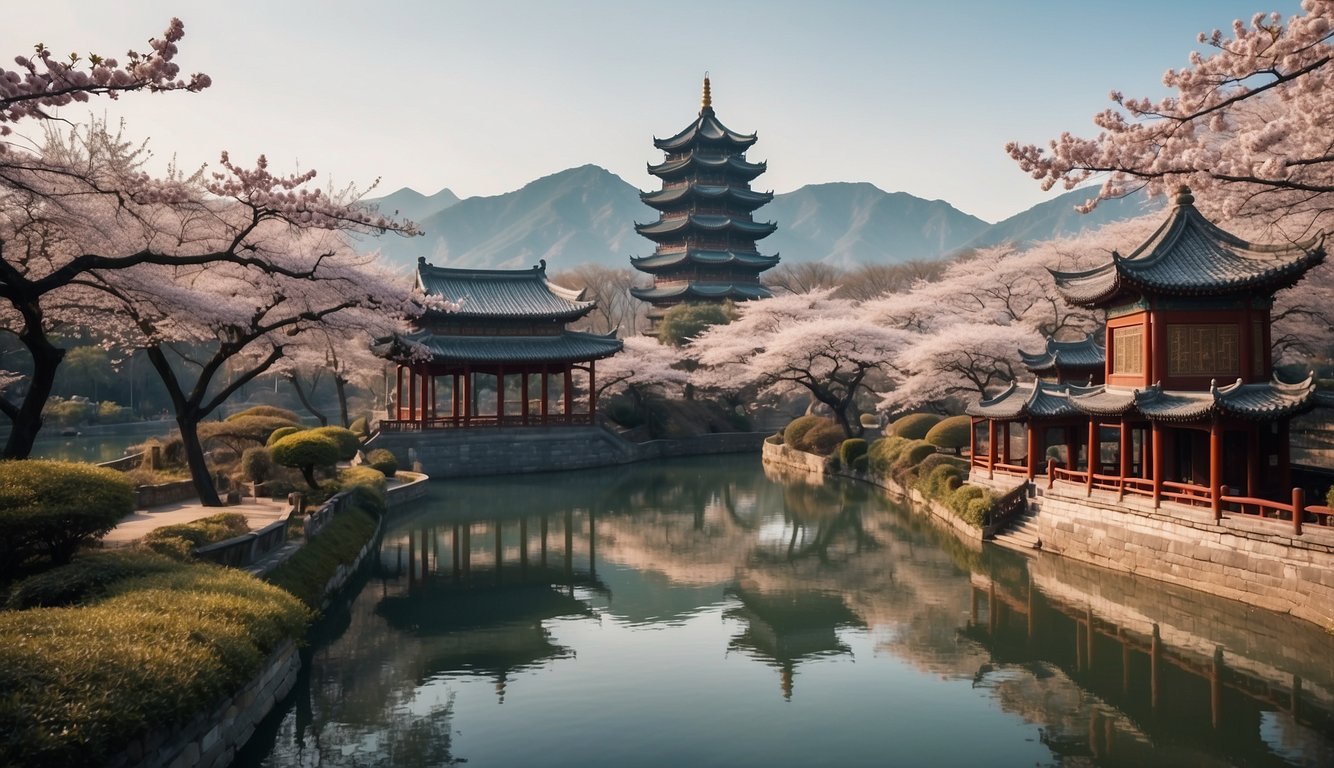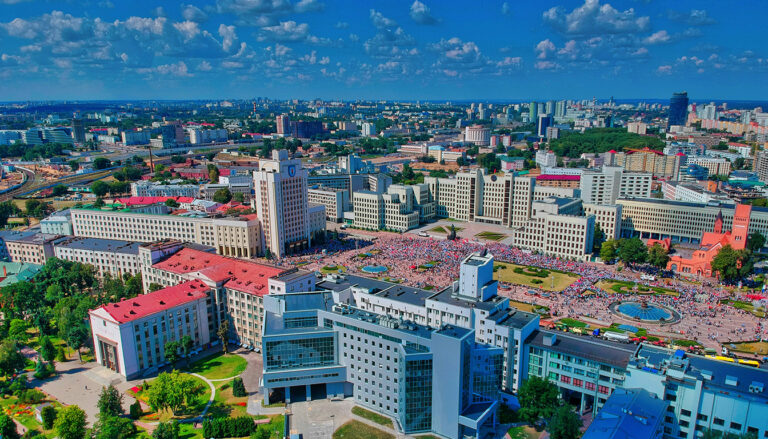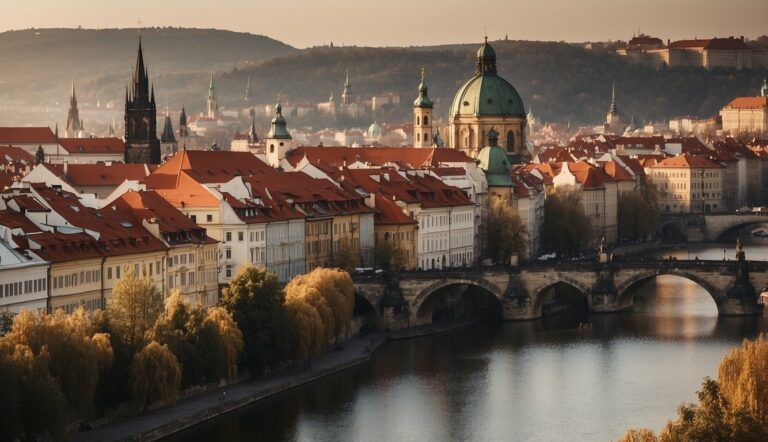Celebrating Christmas in China: Traditional Customs and Modern Influences
Christmas in China, known as 圣诞节 (Shèngdàn Jié), presents a unique blend of Western traditions and Chinese cultural elements.
Although not a public holiday in the country, December 25 has increasingly become a festive occasion, particularly in urban areas.
The celebration of Christmas reflects the Western influence on Chinese society, but it also showcases China’s ability to adapt foreign festivities into its cultural fabric.
Younger Chinese people especially have embraced Christmas as a time for romantic exchanges and gift-giving—paralleling Valentine’s Day in Western countries.
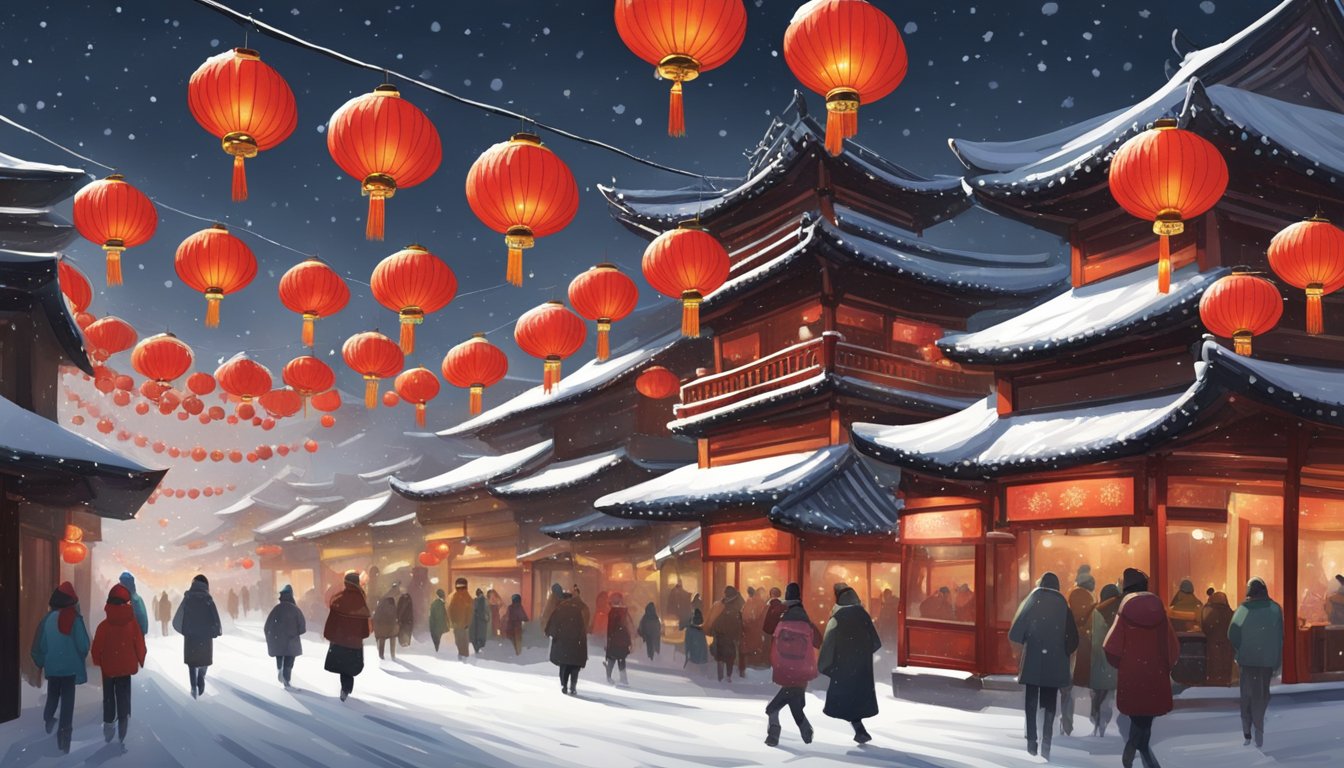
The holiday’s observance varies widely across China.
It’s often marked by decorations and lights, much like in Western countries, but without the religious connotations typically associated with the day.
Instead, commercialism plays a significant role, with businesses and shopping centres capitalizing on the festive mood to promote sales and events.
For most, it’s a day for social gatherings, entertainment, and enjoying the wintertime atmosphere.
Despite the absence of Christmas from the list of official public holidays, the markers of the season—like Christmas trees, Santa Claus, and themed events—are visible, signalling that the holiday has transcended its religious origins to become a contemporary cultural fixture in modern China.
Chinese Christmas has come to symbolize the exchange of gifts and the country’s engagement with global cultural trends.
History and Origin of Christmas in China
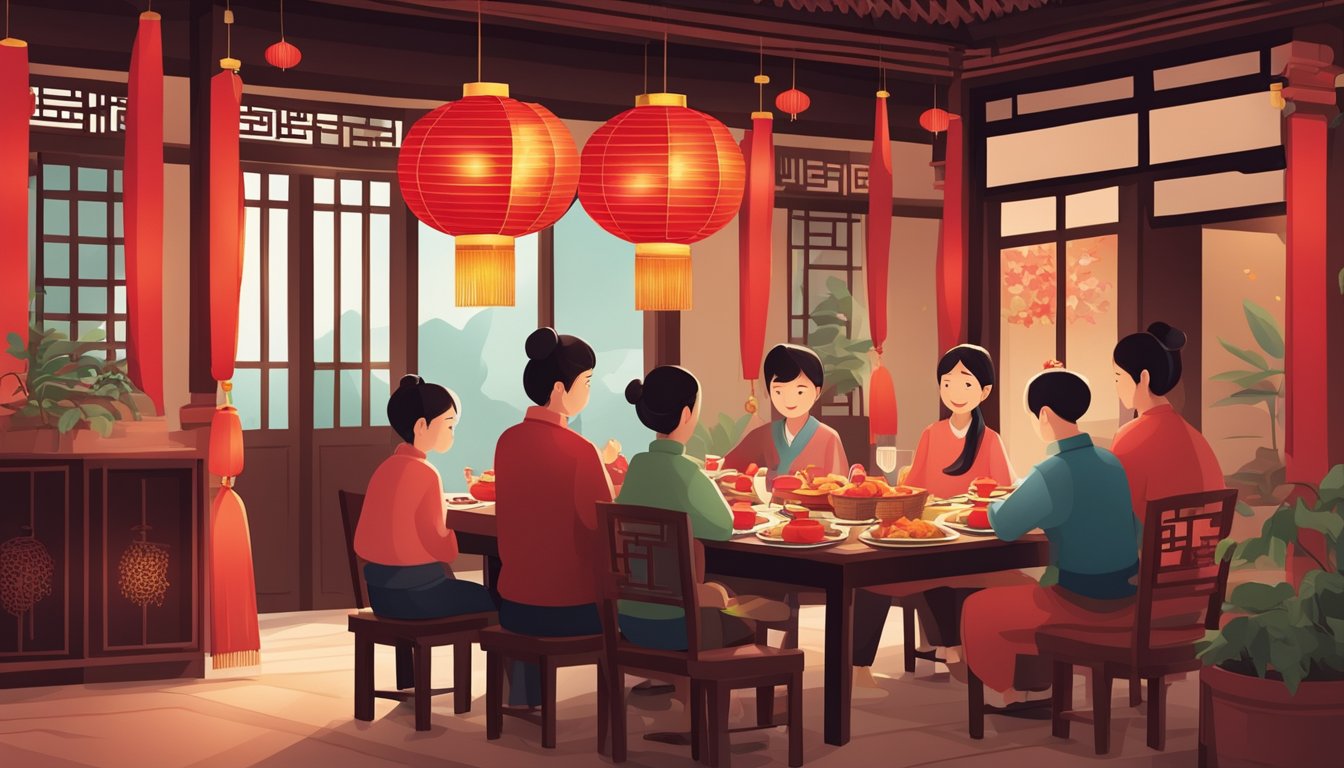
Tracing the origins of Christmas in China reveals a historical tapestry woven through early Christian missionary work and later Western influences that shaped the holiday’s presence in the country.
Christian Missionaries in China
Tang Dynasty (618–907 AD): The earliest recorded presence of Christianity in China dates back to the Tang Dynasty with the arrival of the Nestorian Christians.
Impact: A significant milestone is etched in the Nestorian Stele, which documents the missionary efforts of Alopen, a Syrian monk who reached China in 635 AD. The spread of Christianity during this period, albeit limited, established the foundational presence of Christian thought and occasional festivities akin to Christmas.
Western Holiday Adoption
20th Century: The momentum for Christmas in China gained significantly during the 20th century, partly due to the opening up of China and the proliferation of Western cultural influence.
December 25th: While not a public holiday, Christmas Day, December 25th, is recognized and celebrated in various capacities in China, especially after the country’s post-1978 reforms that welcomed foreign cultural practices.
Influence Analysis: In contemporary times, the holiday is often associated with commercial and educational events rather than religious observance, indicative of Western influence rather than Christian religious practices.
Christmas Celebrations Across China

In China, Christmas is generally viewed through the lens of commercial and romantic festivity rather than religious significance.
The celebrations vary significantly from vibrant big cities like Beijing and Shanghai to the unique cultural spheres of Hong Kong and Macau to the wintry landscapes of Harbin and remote regions like Tibet.
Beijing and Shanghai
In Beijing and Shanghai, Christmas is known for its spectacular decorations and widespread commercial activities.
Malls and department stores become adorned with dazzling lights and Christmas trees, and luxury stores often offer holiday-themed window displays.
Both cities host various Christmas markets where residents and visitors can enjoy a festive shopping experience with seasonal treats and handicrafts.
Hong Kong and Macau
Hong Kong and Macau celebrate Christmas with a distinctive East-meets-West flavour.
Christmas and public festivities blend with local traditions in regions with a more significant Christian population.
Hong Kong’s Victoria Harbour is glorious during the season, and Macau takes pride in its Portuguese-influenced Christmas celebrations. Both regions observe the 25th of December as a public holiday.
Harbin and Northern Regions
Harbin and the northern regions of China transform into winter wonderlands during Christmas.
The renowned Harbin Ice Festival often coincides with the holiday season, showcasing massive ice sculptures and winter sports activities, including at the nearby Yabuli Ski Resort.
For those searching for a distinctly Chinese winter experience, Snow Town offers a dreamy backdrop akin to the Northern Lights.
Tibet and Remote Areas
In Tibet and remote areas, Christmas is generally a low-key affair with little to no official recognition of the holiday.
However, Tibet tourists might encounter modest decorations in hotels catering to international visitors during December.
The emphasis in these regions during winter is more likely to be on local festivals and cultural events rather than Christmas.
Religious Observance vs. Commercial Value

In China, Christian communities observe Christmas distinctly while simultaneously being leveraged as a commercial opportunity by the broader market.
Church Services and Christian Communities
For the Christian population in China, Christmas holds religious significance as the celebration of Jesus Christ’s birth.
Church services are a core aspect of the observance, providing a time for reflection, prayer, and community.
They congregate in churches to participate in traditional religious activities such as Midnight masses and choral performances.
Commercialization and Marketing
Conversely, Christmas in China has also emerged as a commercial holiday with considerable value.
Retailers and businesses exploit the season through aggressive marketing campaigns and promotions, often devoid of the Christian religious context.
The period is marked by a surge in sales, particularly in urban centres where Christmas-themed discounts and decorations attract shoppers.
Customs and Traditions
In China, Christmas is observed with unique traditions and customs that incorporate Western influences with Chinese cultural elements. This blend creates a distinct celebration in various parts of the country, particularly in urban centres.
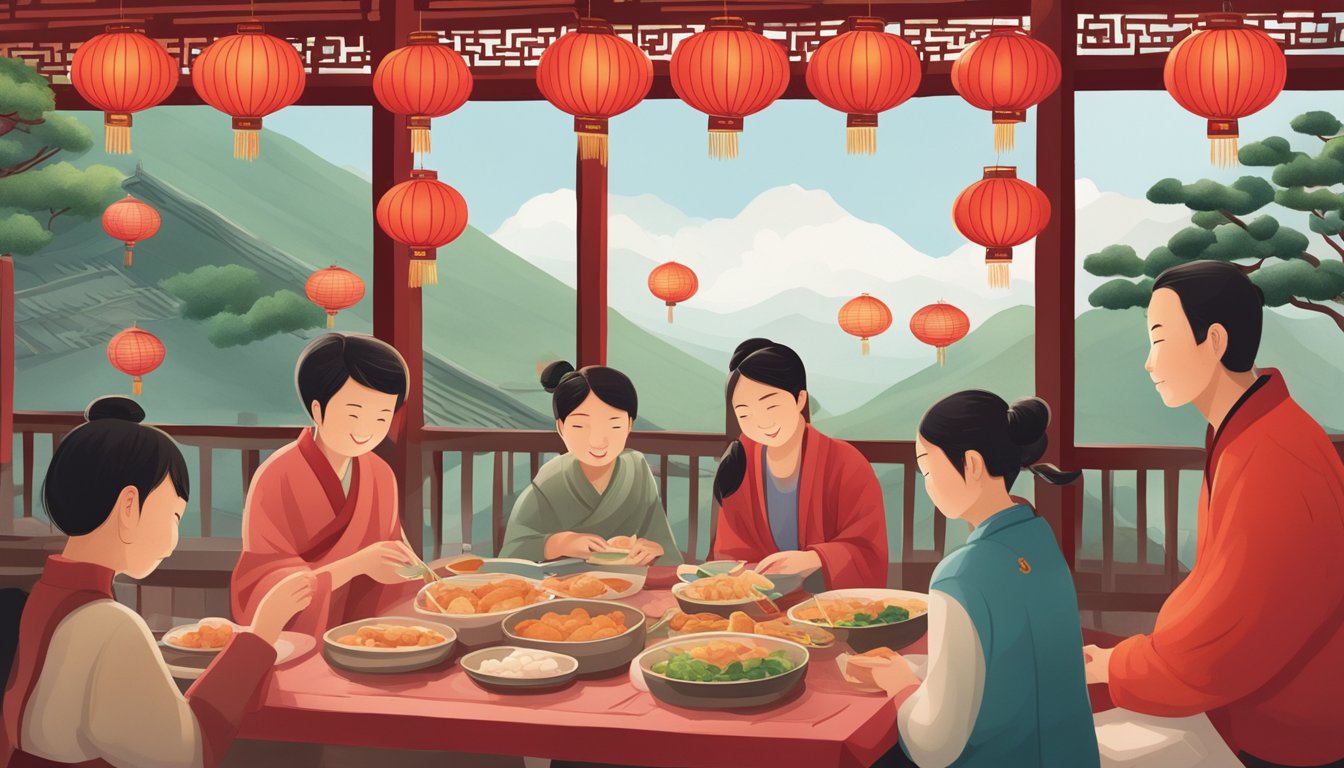
Decorative Elements
Chinese Christmas celebratory decorations often consist of Christmas trees, called “Sheng Dan Shu”, which are adorned with ornaments and lights.
Public spaces and shopping malls are particularly known for their festive embellishments, featuring dazzling displays and vibrant lights to attract shoppers and revellers.
Christmas trees are in prominent public spaces, often adorned with lights and ornaments.
Lights and ornaments decorate homes and public areas, adding brightness and colour to the festive season.
Santa Claus and Gift-Giving
Gift-giving during Christmas in China has taken cues from Western traditions with a unique twist.
Santa Claus, known as “Sheng Dan Lao Ren”, is recognized in China and is associated with gift-giving, mainly in larger cities.
Apple gifting has emerged as a Christmas tradition, where apples, often wrapped in coloured paper, are given due to their association with peace and their Mandarin name, “ping guo”, which sounds like the word for peace.
Santa Claus (Sheng Dan Lao Ren): Symbol of Christmas gift-giving, becoming increasingly familiar.
Gift-Giving Traditions: Includes the exchange of wrapped apples called Peace Apples as a common gift, symbolizing peace and best wishes.
Gifts are often exchanged between friends and couples rather than family members, aligning the holiday more with romance and friendship than family reunion.
Cultural Adaptations and Innovations
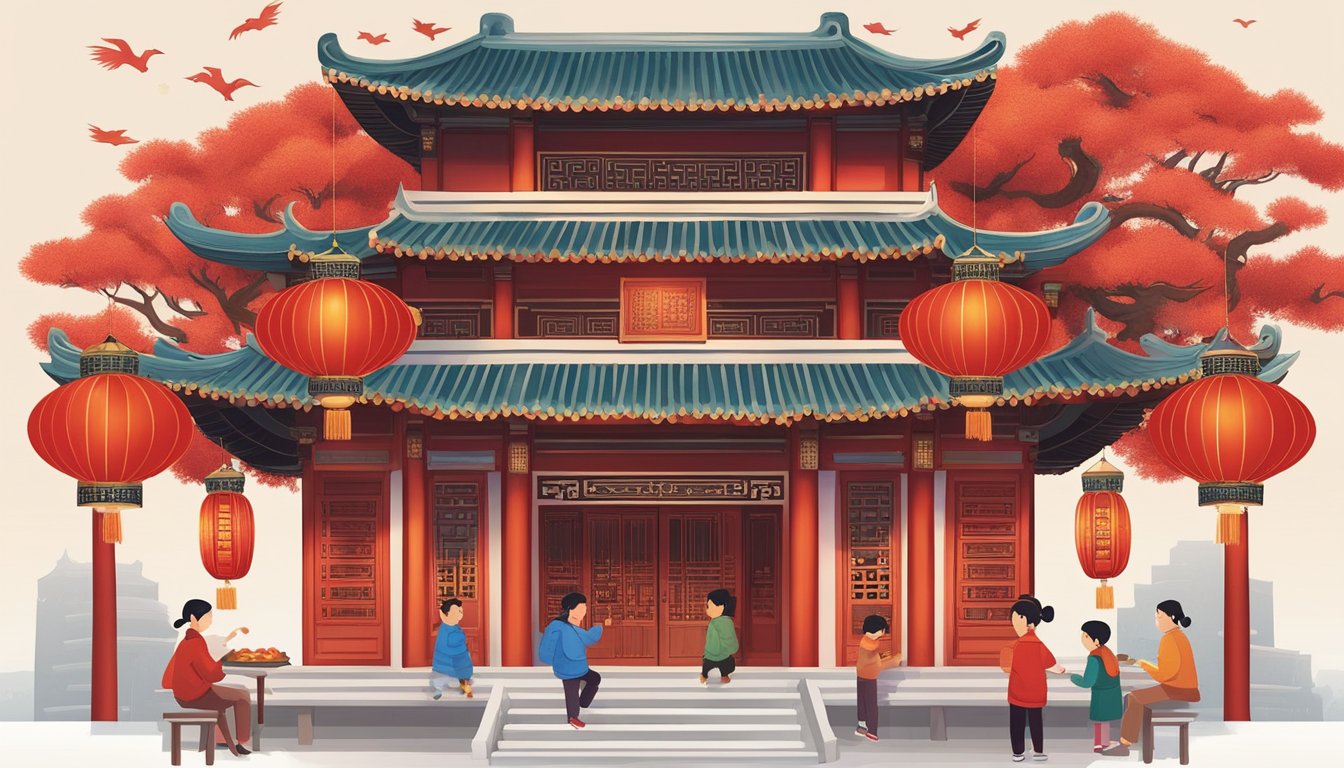
In recent years, Christmas has found its place within Chinese culture, intertwining foreign traditions with domestic customs. This fusion has led to unique adaptations and innovations in decor and culinary practices during the holiday season.
Chinese Flair in Decor and Celebrations
Chinese cities often showcase a distinctive blend of traditional and Western Christmas elements.
Malls and public spaces frequently feature grand decorations, such as giant Christmas trees sparkling with lights and ornaments, sometimes beside Chinese symbols or motifs.
These displays often include local artistic styles and may incorporate red and gold colours, which are auspicious in Chinese culture.
Schools and communities might host performances that merge Christmas themes with Mandarin songs or dances, reflecting a unique Chinese flair.
Local Celebratory Foods
During Christmas, festive foods take on a Chinese twist.
Traditional Christmas meals may not be the norm, but locally inspired-holiday treats have gained popularity. Here’s a snapshot of what you might find on the holiday table:
- Appetizers: Such as spring rolls or dumplings modelled after Christmas themes.
- Main Dishes: Peking Duck is an alternative to the Western Christmas turkey or ham. Sweet and Sour Pork is another popular dish that can be found during festive times, including Christmas.
- Desserts: Special fortune cookies with festive messages or tanghulu (candied fruit) reflecting the season’s spirit.
Social and Public Life

In China, the influence of Christmas has grown, especially within expat communities and urban centres where Christmas-themed events are now common.
Expat Festivities
Expats in China often seek a sense of familiarity during the Christmas season. Many participate in events like Santacon, where individuals dress up as Santa Claus and partake in a festive pub crawl. In cities with a significant expatriate population, such as Shanghai and Beijing, hotels and expat clubs host special dinners, often on Boxing Day, extending the Christmas celebrations.
Christmas Events and Parties
Chinese cities light up with festive events during Christmas. Malls and public spaces put up Christmas decorations and host Christmas tree-lighting events, attracting locals and visitors seeking to experience the festive spirit. Christmas parties are prevalent, ranging from theme park Christmas adventures to river rafting excursions organized for thrill-seekers. These events, although not traditional Chinese customs, allow people to partake in global festivities.
Contemporary Observations and Trends
Recent years have witnessed a notable integration of Christmas within urban Chinese society. This section discusses the unique ways Christmas is perceived and celebrated, mainly focusing on its impact on romantic customs, popular culture, and its interaction with other holidays.
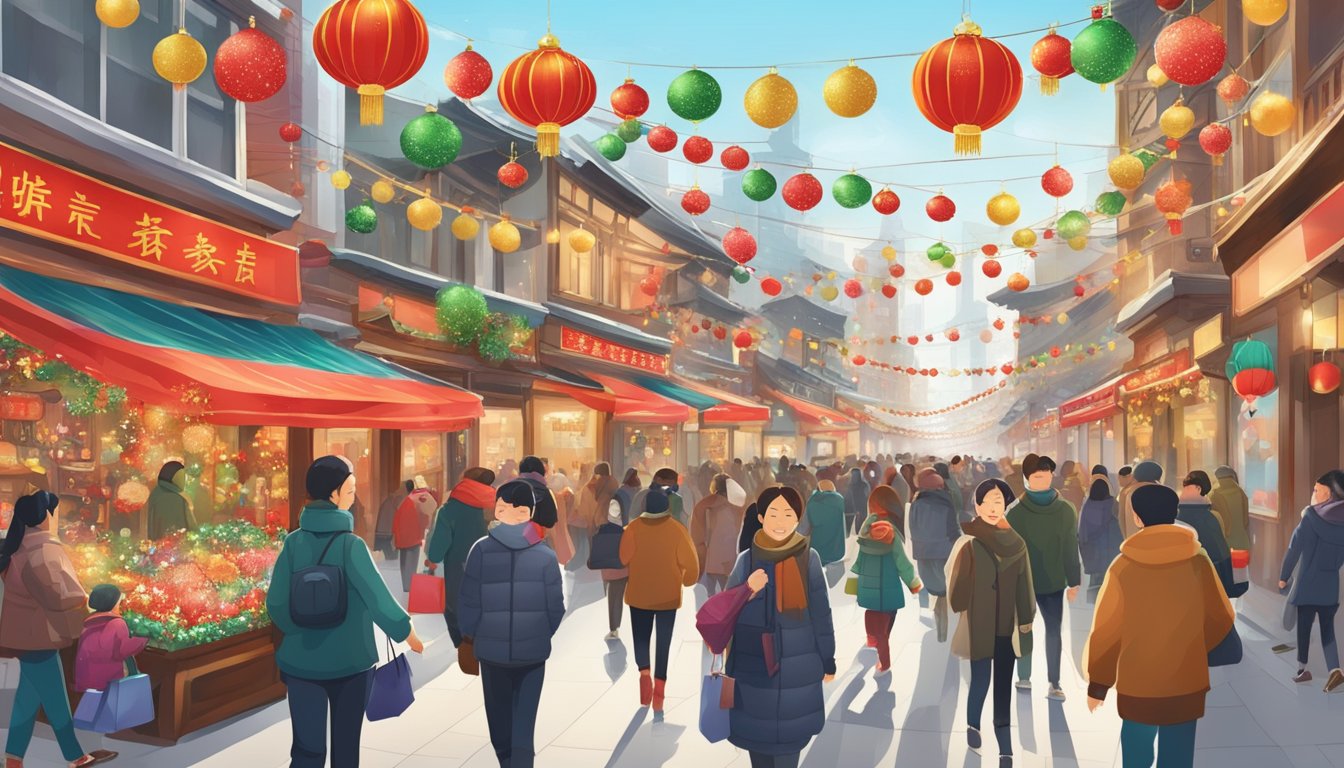
Dating and Romantic Celebrations
In China, Christmas has become an ambient backdrop for romantic dates. On December 25, couples often plan special outings or dinners, analogous to Valentine’s Day celebrations in the West. This uptick in romantic activity is evident in reservations at high-end hotels like Shangri-La and Four Seasons, which often offer Christmas-themed promotions. While ‘Christmas Eve’ is not formally associated with romance, the atmosphere and marketing around Shèngdàn Kuàilè (Merry Christmas) have encouraged its adoption as a night for couples to exchange gifts and spend quality time together.
Influence on Popular Culture
The adoption of Christmas has left a clear imprint on China’s cosmopolitan centres. Christmas songs like jingle bells resonate through malls and coffee shops, such as Starbucks, which garners attention with seasonal drinks and festive decor. Beyond the auditory landscape, Christmas events are prevalent in urban areas, drawing crowds for shopping and entertainment and influencing consumer behaviour and retail trends. Chinese pop culture has assimilated Christmas into its festive lexicon, airing special television programs and hosting themed events that engage foreign communities and locals.
Interactions with Other Holidays
China’s encounter with Christmas has led to interesting cultural dynamics when placed in the context of traditional festivals. Instead of overshadowing local celebrations, Christmas often coexists with other holidays, merging Eastern and Western traditions. Notably, it does not rival the significance of traditional holidays such as the Lunar New Year.
Instead, it is regarded as a Western holiday with a commercial flavour that complements the consumerism often seen during other festive periods. In such a context, Christmas has found a unique place among China’s diverse celebrations, portraying a country becoming increasingly global while retaining its native cultural identity.
Reflections on Christmas in China
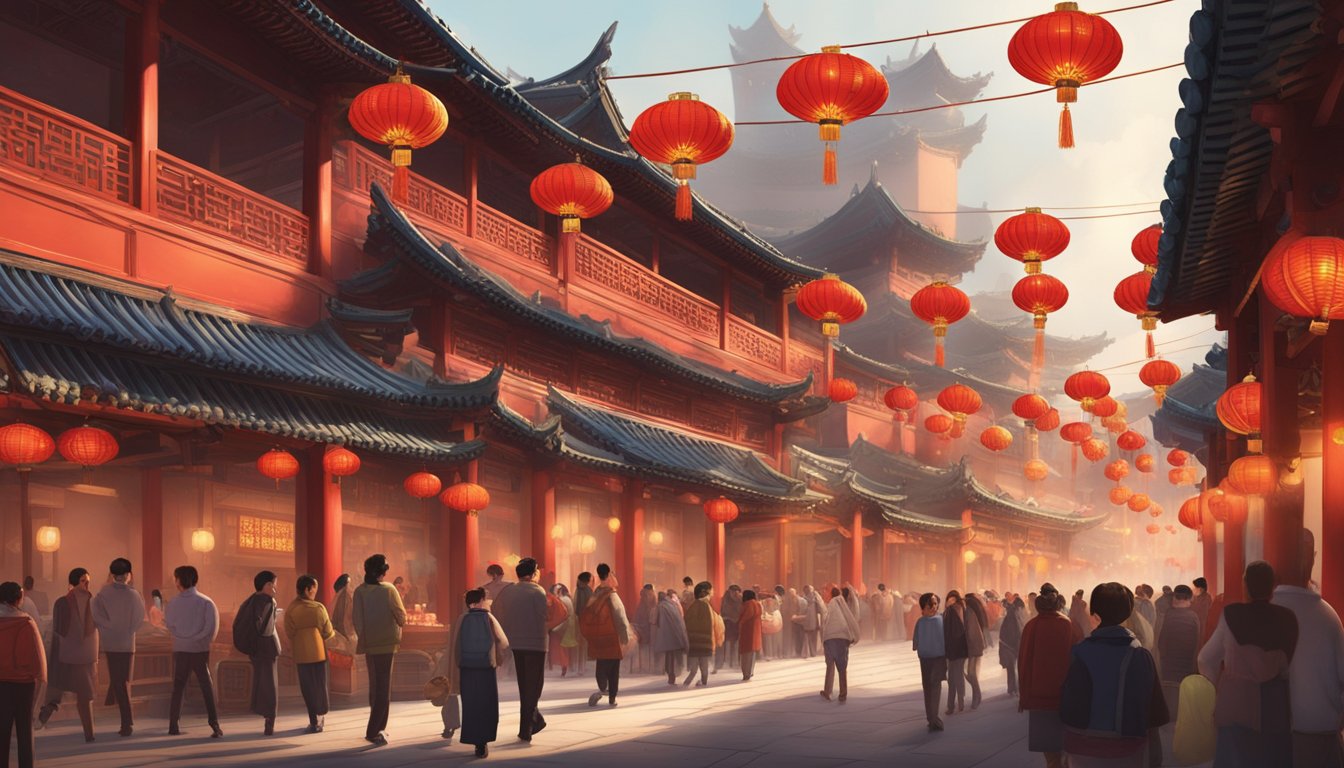
In major Chinese cities, Christmas is visibly marked by glittering decorations and is viewed through a lens of commercial and cultural fascination, while its religious roots remain largely unobserved.
Public Perception and Reception
Christmas in China is a spectacle of festive decorations; one can witness giant Christmas trees, lights, and tinsel in shopping malls. These are indicators of foreign influence and the adoption of Western festivities. Despite the Communist Party’s secular stance and China’s predominant Buddhism, the Chinese embrace Christmas as a non-religious cultural event.
For most, the celebration lacks a religious connotation and is not a day of spiritual reflection. However, within China’s Christian minority, which coexists with the state’s control of the church, Christmas Eve might be a peaceful evening spent at state-sanctioned churches, reflecting on the birth of Jesus.
- Public Holiday: It’s important to note that Christmas is not a public holiday in mainland China but is in Macau and Hong Kong.
- Chinese Celebrate Christmas: Non-Christian Chinese may celebrate with friends or participate in shopping events, taking advantage of the festive sales similar to the Western “Black Friday.”
- Christmas Traditions in China: Rather than embracing traditional Christian observances, Christmas in China often involves gift exchanges and dining out.
Future Outlook
Looking ahead, the recognition of Christmas in China appears poised to continue along its current trajectory: growing as a commercial holiday rather than a religious one. It reflects the country’s openness to global cultural exchanges while maintaining a clear stance on separating the spiritual and secular domains.
The increasing popularity of Christmas, especially in urban areas, is unlikely to lead to changes in the public holiday structure or to gain any religious significance within the broader cultural context. However, Christmas will likely persist as a vibrant part of China’s winter festivities, alongside Chinese New Year celebrations, and could potentially evolve into new Chinese traditions.
Frequently Asked Questions

What are some traditional Christmas foods enjoyed in China?
Christmas in China does not have a set menu of traditional foods, but the festive spirit has been adopted with various Western treats and the unique tradition of giving apples on Christmas Eve.
How is Christmas typically celebrated in China?
They generally observe Christmas with a modern flair, particularly in urban areas where it is seen as a romantic holiday with couples exchanging gifts, going on dates to places like ice skating rinks or amusement parks, and shopping for new attire.
Can you describe the history of Christmas celebrations in China?
The celebration of Christmas in China is relatively recent, mainly adopting Western practices and the commercial aspects of the holiday since the opening-up policy in the late 20th century.
What unique decorations are used during Christmas in China?
Decorations in China for Christmas are usually found in commercial areas and can include Christmas trees, lights, and various ornaments, but unlike Western traditions, most private homes remain undecorated.
What is the significance of giving fruit on Christmas Eve in China?
The practice of giving apples on Christmas Eve in China is attributed to a linguistic pun—the Mandarin word for apple, “苹果” (píngguǒ), sounds similar to the word for peace, “平安” (píng’ān).
How does Chinese culture incorporate Santa Claus into their Christmas celebrations?
While Santa Claus is not a traditional Chinese figure, the character ‘Sheng Dan Lao Ren’ has been incorporated into the holiday as a fun element.
Especially in commercial areas, Santa is often seen in decorations and as part of promotional activities.

